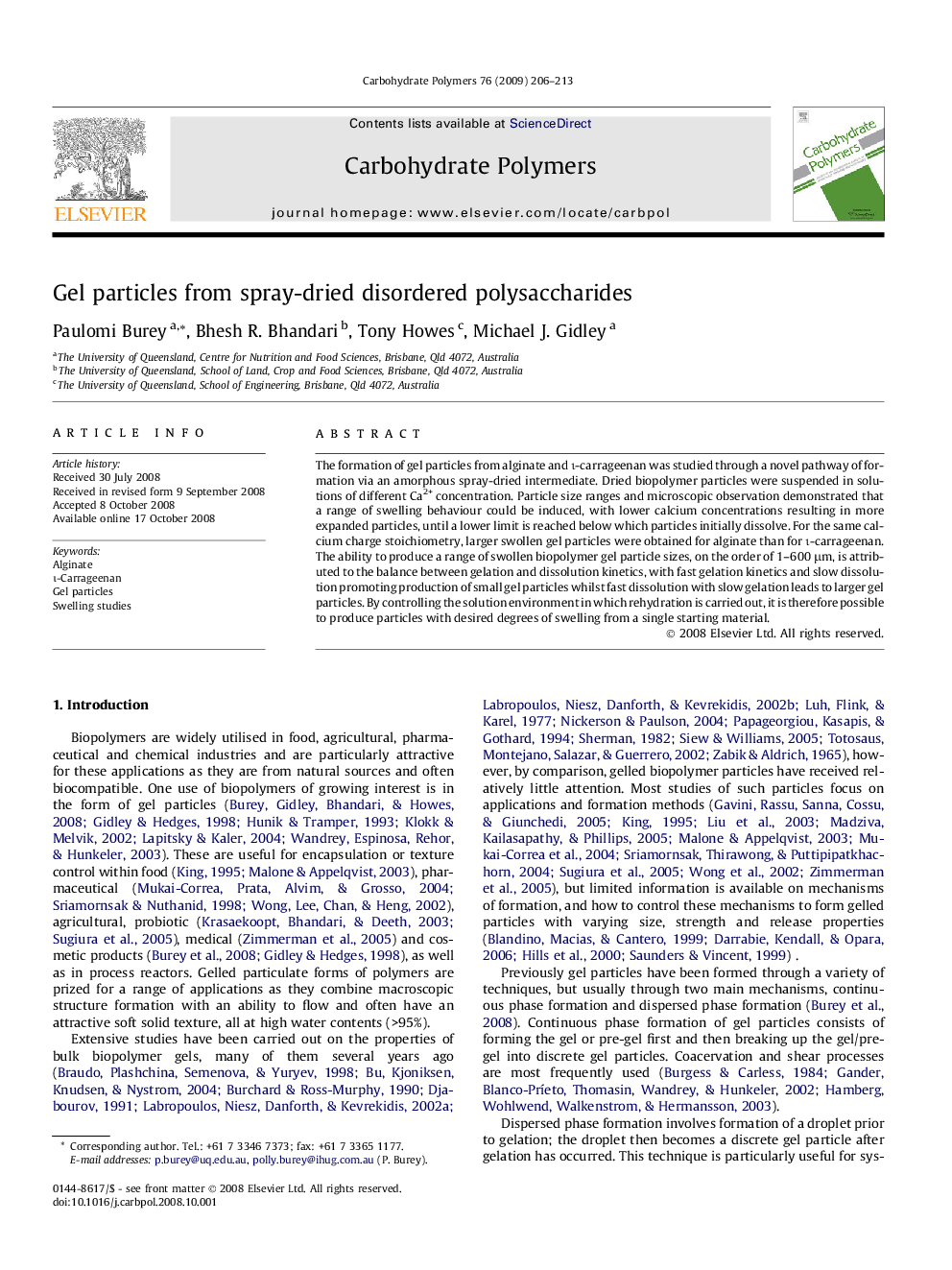| Article ID | Journal | Published Year | Pages | File Type |
|---|---|---|---|---|
| 1387366 | Carbohydrate Polymers | 2009 | 8 Pages |
The formation of gel particles from alginate and ι-carrageenan was studied through a novel pathway of formation via an amorphous spray-dried intermediate. Dried biopolymer particles were suspended in solutions of different Ca2+ concentration. Particle size ranges and microscopic observation demonstrated that a range of swelling behaviour could be induced, with lower calcium concentrations resulting in more expanded particles, until a lower limit is reached below which particles initially dissolve. For the same calcium charge stoichiometry, larger swollen gel particles were obtained for alginate than for ι-carrageenan. The ability to produce a range of swollen biopolymer gel particle sizes, on the order of 1–600 μm, is attributed to the balance between gelation and dissolution kinetics, with fast gelation kinetics and slow dissolution promoting production of small gel particles whilst fast dissolution with slow gelation leads to larger gel particles. By controlling the solution environment in which rehydration is carried out, it is therefore possible to produce particles with desired degrees of swelling from a single starting material.
